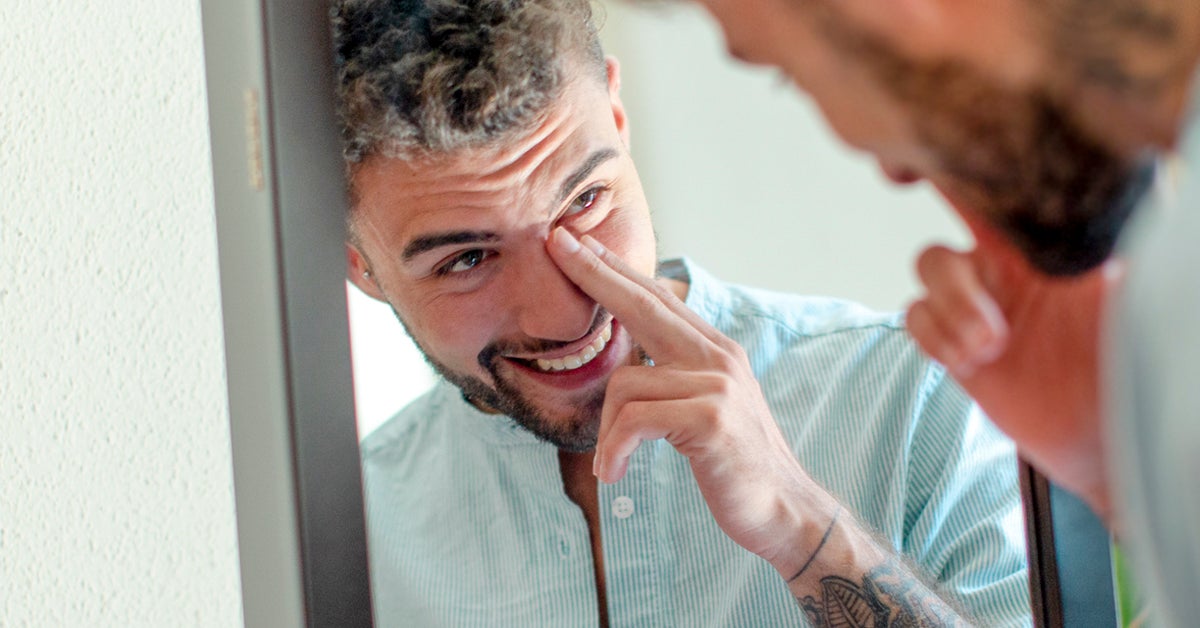Antibiotics for Pink Eye: When and Who Should Use Them - Healthline

Pink eye, also known as conjunctivitis, is a common eye condition that can cause eye redness, itching, and eye discharge.
There are several types of pink eye. Treatment varies depending on what type you have. One way to treat bacterial pink eye infections is with antibiotics.
Antibiotics don't work to treat viruses, though. That includes viral pink eye.
Pink eye, whether caused by bacteria, viruses, or allergies, will typically clear up on its own within 2 weeks.
This article will discuss treatments recommended for pink eye, including when to ask for antibiotics.
According to the American Academy of Ophthalmology, the signature symptom of bacterial pink eye is a greenish discharge that lasts all day.
If you've been experiencing this discharge in addition to symptoms of redness and itching, you may have bacterial pink eye. This type of pink eye is less common than viral pink eye, but it's not rare.
Antibiotics can work to treat bacterial pink eye. But even when bacteria are causing your pink eye, it will most likely clear up on its own after a couple of days.
For this reason, doctors don't always prescribe antibiotics right away to treat bacterial pink eye.
Your doctor may recommend antibiotics if:
- you have a weakened immune system due to another health condition
- your symptoms are very severe
- your symptoms have persisted for a week or more
Some schools have a policy that requires children or employees with pink eye to be treated with antibiotics before they can return.
Antibiotics for pink eye typically come in the form of eye drops. These medications are by prescription only.
A
Below are a few types of antibiotics that your doctor may prescribe.
Ciprofloxacin
This antibiotic comes as a topical ointment or solution. It can be used once every 2 hours, or less often until the infection starts to clear. Your doctor will give you specific instructions.
Ciprofloxacin falls under the fluoroquinolone antibiotic category and is considered broad spectrum. This means it can treat both Gram-positive and Gram-negative bacterial infections.
Tobramycin
Typical dosing recommendations for tobramycin instruct you to use the eye drops every 4 hours for 5 to 7 days.
Tobramycin falls under the aminoglycoside antibiotic category. It primarily treats Gram-negative bacterial infections.
Erythromycin
Erythromycin is a prescription antibiotic ointment that's applied to your eyelid in a thin strip. It may cause some vision blurring for the first few minutes after it's applied.
Ofloxacin
This is an antibiotic eye drop that can be used four or more times per day in the affected eye. It falls under the fluoroquinolone antibiotic category and is considered broad spectrum.
Antibiotics used for pink eye can cause side effects. These may include:
- stinging
- itching
- burning
- redness
These side effects happen to be the same symptoms of pink eye, so it might be hard to know whether your treatment is actually working.
If symptoms seem to worsen right after you start using antibiotics, you might be experiencing side effects.
Stick to the treatment for up to 2 days to see if symptoms improve, and consult your doctor.
In many cases, you can treat pink eye yourself using home remedies.
When you first notice symptoms of pink eye, you can treat itching and dryness with artificial tears that are available over the counter.
If itching persists, apply a clean, cool compress against your eye.
Pink eye is very contagious. Take special care to avoid sharing any objects that have come into contact with your eyes, like:
- towels
- makeup
- pillows
- sunglasses
- bed sheets
Wash your hands frequently. Avoid touching your eyes as much as possible. This can help avoid transmitting the infection to others, or from one eye to another.
Treatment options for viral pink eye are limited. For the most part, it needs to run its course. Symptoms will usually clear up within a week.
While you have viral pink eye, you can manage symptoms using anti-inflammatory eye drops or artificial tears.
You can also take over-the-counter pain medication, such as ibuprofen, if your eyes hurt.
If you're having severe eye pain, call your doctor right away.
Exposure to irritants can also cause pink eye. This can include things like:
- pet hair
- contact lenses
- cosmetics
- fragrances
- environmental pollutants
If your symptoms seem to be equally affecting both your eyes instead of just one, you may have allergic pink eye.
If home remedies aren't effective, you might want to try an oral or topical antihistamine to help with symptoms of itching and redness.
Your doctor can recommend prescription-strength antihistamine eye drops, or an anti-inflammatory eye drop, if your symptoms persist.
Antibiotics only work to treat pink eye that's caused by bacteria. Sometimes doctors will prescribe antibiotics for pink eye even if they aren't sure which type of pink eye you have.
If you have viral or allergic pink eye, antibiotics could prolong the length of your symptoms.
If you have pink eye, start treatment by using home remedies to try to soothe your symptoms. Remember that most cases of pink eye clear up on their own within a couple of days.
If your symptoms persist, or if you need to return to school or to work, speak with your doctor about the possibility of using antibiotics as a treatment.
Comments
Post a Comment